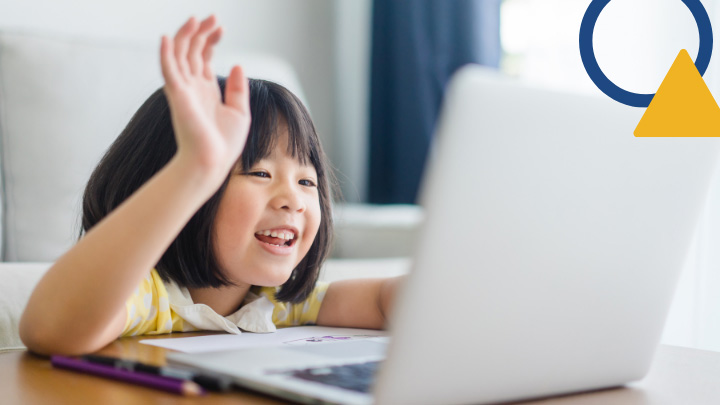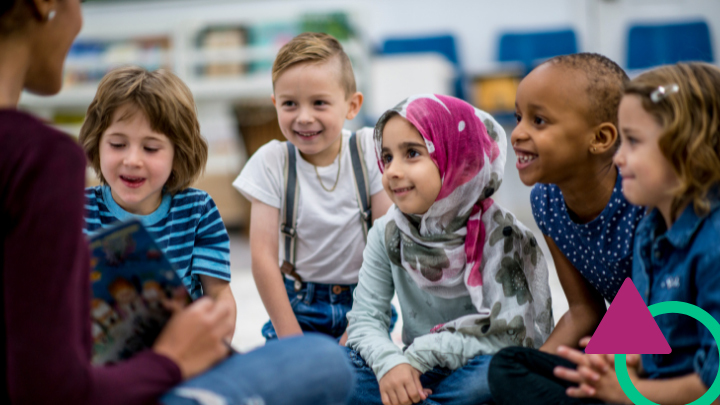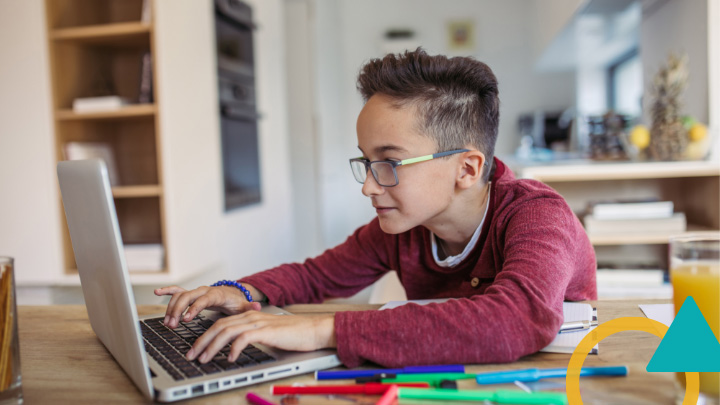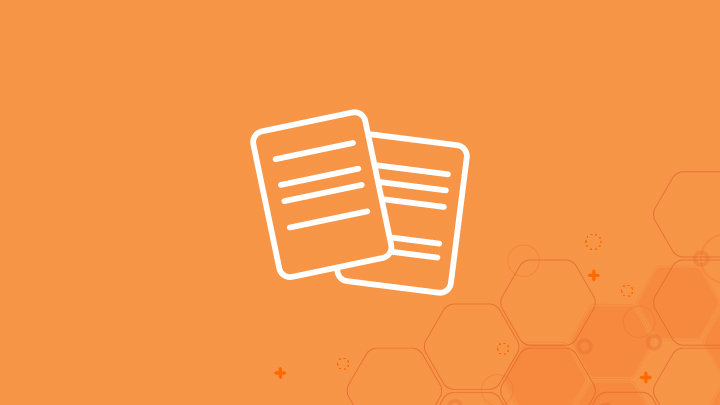Genee’ Johnson is an 8th grade English teacher and Teacher Leader in the Center District 58 and a member of the Culturally Responsive Teaching and Learning Master Teacher Project. As part of her back-to-school preparation, she sent a letter to parents on how to support students with learning from home. This blog adapts the advice from that letter to a broader audience. Feel free to share this with parents and guardians at your school!
For many of us parents, it has been a while since we were in school as students. Things were simpler back in the day when we were young, with our time occupied by homework, friendships, and activities. Now, as adults, we have bills to pay and mouths to feed, trying our best to make sure our kids have a life better than our own. Often it can be hard to remember what it was like to be a student.
Stop and take a moment—no matter what stage of learning you are in—and ask yourself, What did I need to be successful as a student? Little Genee’ Johnson needed a comfy bed; my nice gel pens that glided across the page like a smooth criminal, graffitiing my paper in pink ink; 2Pac’s All Eyez On Me CD playing from start to finish; and my door to my room shut tight.
However, this is America, and COVID definitely caught us slipping. Now that we have been slipping, falling, we are on our way up. This past spring, we struggled to support our kids’ learning at home. This fall, we have another shot at getting it right, so we have to improve. What our kids need to be successful this fall looks different from what they needed five months ago, as we push our students’ learning so their intellect keeps progressing like a rolling stone. We need to work with them to develop new routines and procedures for this year. Here are a few tips I’ve used myself and given to my parents to have the conversation and establish our new normal.
Reflect on the Successes and Failures of Remote Learning
I like to reminisce for a spell and think back on remote learning from the spring; there were some successes and some failures. As a parent, I saw the joy my children had in exploring their creativity. After finishing their schooling in a matter of 3-4 hours, they had the rest of their day to explore life and engage in hands-on projects.
As an educator, I was stunned by how remote learning flipped the narrative for students. Students who were disengaged or who rarely turned in assignments when we were in the building became exemplary students with online learning. While I was always sure of their ability and intelligence, they flipped the script with remote learning, staying up to date with work and turning in all of their assignments. On the other hand, there were several Advanced Placement students that shut down, stopped doing work, and complained to me and their parents that they could not focus, understand, or learn in this manner. Without the familiar structures of the in-person experience, they were lost as learners.
Ask What Students Need
First things first, we must ask our students what they need. What is their optimal learning environment for them to get out there and try to function? My oldest son was in 6th grade when quarantine began, and it seemed like every time I looked at him, he had earbuds in. I am ashamed to say I reacted the same way my mother did to me as a child: “Take those earbuds out! You cannot work with music in your ears.” He complied, head hung and shoulders slumped. Then, I noticed he began to work at the table with me with his head on his hands. It progressed to him not wanting to work at the table with me, but far away in his room upstairs.
It dawned on me that I had taken away his power over his learning environment. I had told him what he needed; I assumed and didn’t ask questions. I had become the parent who just didn’t understand. I went back to my son and asked him why he wanted earbuds. We had a conversation, and I asked him a few questions:
- Since you have to be home, where would you be most comfortable working?
- What do you need us to purchase that we don’t already have? What do you want to use every day, and know you will need to use every day, to do work in all of your classes?
- What is your optimal daily schedule? This includes breaks and how early you will log into class (Remember, “on time” means 5 minutes early).
Determine What Is Possible in Your Context
Next, look at your student’s list and see what is feasible for you to provide for them. Have an open conversation with them about what you are not able to provide and give them the honest reason why. I still wish my mother had done that for me. Playing music while I did homework made my mother come into my room and lose her mind up in there. It was what I needed, and she never told me why I couldn’t have music blasting while I studied. The studying was for me. To this day I still don’t know.
One of my students emailed me during distance learning and asked if he could miss daily lessons because he sleeps in and does better late at night with his work. Of course, I had to say no. Then, after reflecting, I emailed back and told him he could do his work at whatever time of day he needed to. He did need to be present in class to learn – it was not feasible to excuse him from missing synchronous learning. However, the beauty of asynchronous learning is that I could accommodate him functioning better at night.
Write Out a Plan and Your Agreements
As you are discussing your child’s optimal home learning environment, take notes. Writing down the agreed-upon plan, process, and environment for optimal learning at home is the only way to ensure that no one’s mind plays tricks and misremembers. Even if the agreement is a 4-page letter, it will ensure there is no more drama about what was said. In the event that we—student, parent, and educator—ever come to a crossroads, there will be a point of reference to look back at. Having a written plan helps to keep everyone on the same page.
Acknowledge Your Role in the Process
Accountability is key to helping our young people have success in school and in life. As guardians, we have to teach them accountability by holding them to their word. Writing and agreeing upon a plan is the first step. Ensuring our students are keeping their word and using the tools they said they need to be successful is the second step, accountability. So, the moment you see half steppin’, check-in with them and let them know there can be no half steppin’. Refer back to the plan that was written and agreed upon, and find which part is not working, which steps need to be adjusted, or whether they are neglecting some parts of the agreement.
Success cannot merely be wrapped up into one conversation with our students. It is most definitely a starting point. Giving our kids a voice in their education is paramount, as it fosters ownership. Accountability is a lifelong skill that can be started at any age. Let’s be clear there will be setbacks and some “Let’s get some things straight” conversations, but I do believe a conversation fostering ownership and accountability is a solid foundation for a successful remote learning environment.







